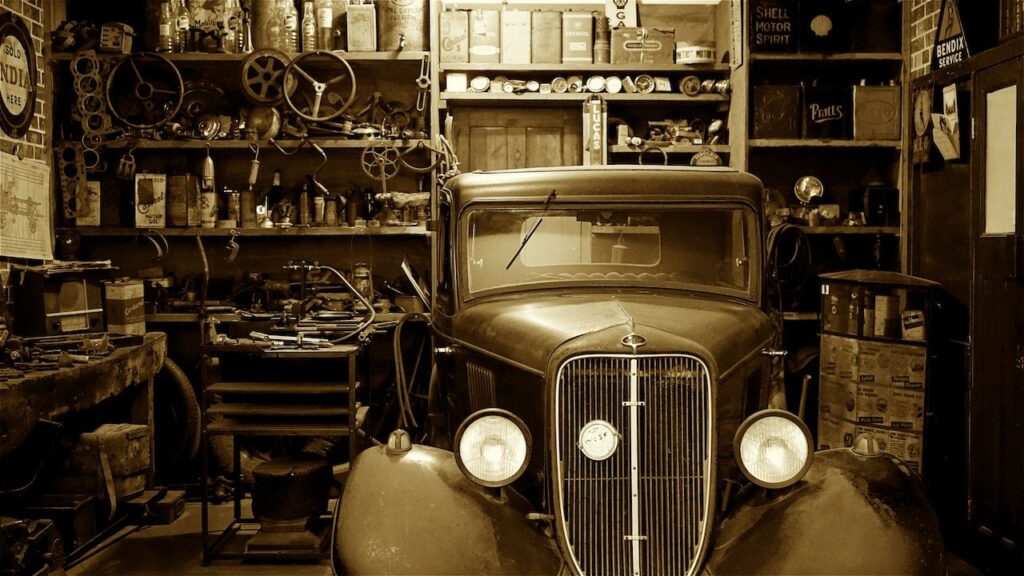
Keeping Your Antique Car Safe During Shipping
If you’re reading this, chances are you’ve got a vintage beauty sitting in your garage, and you’re thinking about shipping it somewhere.
Maybe it’s a car show, maybe you’re relocating, or perhaps you’ve just sold it to another collector.
Whatever the reason, you’re probably wondering about the best way to get your antique car from Point A to Point B without a scratch. Well, you’re in luck!
Today, we’re diving into the nitty-gritty of RORO shipping and why it might not be your best bet for antique cars. Let’s get started!
What is RORO Shipping?
First things first, what the heck is RORO shipping?
RORO stands for “Roll-On/Roll-Off,” and it’s a method where vehicles are driven onto a specialised ship and secured on the deck. Sounds simple, right?
Well, it is, and that’s why it’s a popular choice for shipping modern cars. But when it comes to antique cars, it’s a whole different ball game.
Risks in RORO Shipping Your Antique Car
Let’s delve into the potential pitfalls of using RORO (Roll-On/Roll-Off) shipping for your antique car:
-
Exposure to Weather: Unlike container shipping, RORO leaves your car exposed to the elements—rain, sun, and sea salt can all take a toll on your antique car’s exterior.
-
Risk of Theft: With RORO shipping, your car is more accessible, making it a potential target for theft or vandalism during transit or while waiting at the port.
-
Handling Damage: Multiple people will drive your car on and off the ship in RORO shipping. Each time it’s moved, there’s a risk of dings, scratches, or even mechanical issues.
-
Lack of Climate Control: Antique cars often require specific climate conditions to maintain their condition. RORO shipping doesn’t offer climate-controlled environments.
-
Potential Fluid Leaks: Older cars might have a tendency to leak oil or other fluids. In a RORO setting, this could lead to additional charges or complications.
-
No Additional Padding: RORO doesn’t allow for extra padding or customized supports for your antique car, which could be a problem during rough seas.
-
Longer Transit Times: RORO ships often make multiple stops, which could mean a longer transit time and more handling of your car.
-
Limited Insurance Options: While you can get insurance for RORO shipping, the coverage options may not be as comprehensive as those available for container shipping.
-
Inadequate Securing Methods: RORO ships use standard methods to secure cars for transit. These methods may not provide the level of care needed for an antique car, leading to potential movement and damage during the journey.
Each of these risks can add stress and potential cost to the process of shipping your antique car. Which is why it is crucial to weigh these factors carefully when deciding on a shipping method.
Why Container Shipping Your Antique Car is Better
To give you a bit of balance, let’s take a look at using a container to ship your antique car instead.
-
Enhanced Protection: Your car is enclosed in a steel container, offering a shield against weather conditions like rain, sun, and sea salt.
-
Increased Security: The container is sealed, reducing the risk of theft or vandalism during transit or while docked at the port.
-
Less Handling: Once your car is securely placed in the container, it stays there until it reaches its destination, minimizing the risk of damage from multiple handlings.
-
Climate Control: Some containers offer climate-controlled environments, which is crucial for maintaining the pristine condition of antique cars.
-
Customization: You can add extra padding, wheel chocks, or even a custom-built frame inside the container to keep your car in place.
-
Personal Items: Unlike RORO shipping, you can pack personal items in the car or in the container, making it convenient if you’re also moving other belongings.
-
Reduced Fluid Leaks: The risk of fluid leaks damaging other cargo is minimized as the car is contained within its own sealed environment.
-
Door-to-Door Service: Many container shipping services offer door-to-door options, picking up and delivering the car right at your specified locations.
-
Stackability: Containers can be easily stacked on the ship, making the shipping process more efficient, potentially faster and less expensive.
-
Less Wear and Tear: Since the car is not being driven on and off the ship, there’s less wear and tear on the tyres, gears and engine.
-
Better for Long Distances: For long-haul journeys, container shipping is environmentally better on fuel consumption based on mass and flow dynamics.
-
Isolation from Other Cargo: Your car is isolated from other vehicles and goods, reducing the risk of scratches or dents caused by other items moving around during transit.
-
Flexibility in Scheduling: Container shipping often provides more flexible long-term scheduling options, allowing you to choose a time frame that best suits your needs.
-
Peace of Mind: Knowing that your antique car is securely packed and protected in a container can offer an invaluable sense of security and peace of mind.
Each of these reasons contributes to making container shipping a superior option for transporting antique cars than RORO shipping. Container shipping your antique car offers a blend of security, flexibility, and customisation that RORO shipping generally can’t match.
Strapping and Loading Your Antique Car for Container Shipping
Proper Strapping
When it comes to antique cars, you can’t just throw them in a container and call it a day. Proper strapping is crucial. The use of soft wheel straps and ratchet tie-downs to secure your car in place without damaging it, are a must.
Despite what many people believe, using metal chains are more likely to damage the chassis or body of your car during shipping. This is why nylon car straps and wheel nets, that may look too fragile, are used instead.
Loading Tips
Always use a professional loading service experienced in handling antique cars.
They’ll know how to position your car in the container to minimise movement during transit.
They also have things like wood chucks and dampers for fixing your car inside the container. Professionals can also advise you on car covers and how to best protect the duco when it’s inside the container.
Importance of Getting Additional Insurance
Let’s face it, no matter how careful you are, shipping a car always comes with some level of risk.
That’s why getting additional insurance is a no-brainer.
Some shipping companies offer basic coverage, but when it comes to antiques, you’ll want to go the extra mile. Get an all-risk policy that covers any potential damage or loss during shipping. Trust us, it’s worth the peace of mind.
Shipping Your Antique Car
RORO shipping might be a cost-effective and convenient option for modern cars, but when it comes to your antique beauty, container shipping is the way to go. From the added protection and security to the customisation options, it’s the best choice for keeping your antique car safe and sound.
Shipping an antique car is not just about getting it from one place to another; it’s about preserving a piece of history. So take the time to choose the right shipping method and shipping agent to safeguard your classic car. It deserves nothing less!
Call and talk with us about your antique car move, on 1300 404 579.
Happy shipping, and may your antique car arrive in great condition, just like it is now.





